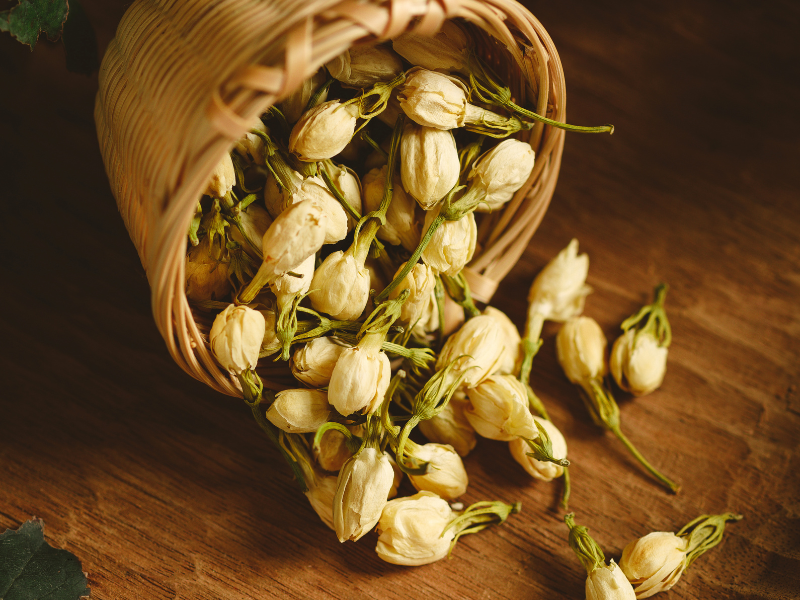The warm sun filters through a grove of tea bushes, their leaves glistening with morning dew. Nearby, fields of tiny, pure white jasmine buds prepare to unfurl under the moonlight, releasing an intoxicating, sweet perfume. This harmonious marriage of Camellia sinensis and Jasminum sambac blossoms creates one of the world’s most beloved scented teas, universally known as Jasmine Tea. But understanding its nuances goes far beyond this simple translation. Delving into its history, intricate craftsmanship, varieties, and the poetic language describing its essence unlocks a deeper appreciation of this fragrant treasure.
The Golden Threads of History: From China to the World
Jasmine tea’s origins weave back over a thousand years to China’s Fujian province, likely during the Song Dynasty (960-1279 AD). Its creation was born from a desire to preserve the ephemeral beauty and scent of the highly prized jasmine flower. Historical records suggest scenting tea with floral blossoms (hua cha or 花茶) became especially refined during the Ming Dynasty. Early methods were rudimentary, but the principle of layering fresh tea leaves with jasmine blossoms evolved into the sophisticated, labor-intensive process known today. As trade routes flourished, this fragrant commodity became a valuable export, earning the moniker “scented tea” internationally, with jasmine tea becoming its most iconic representative. Its global journey solidified its English name. Today, while primarily associated with China (especially Fujian, Guangxi, and Yunnan), high-quality jasmine tea is also produced in Taiwan and other regions adapting similar meticulous scenting techniques.
The Alchemy of Aroma: Unveiling the Craft of Scenting
Creating authentic jasmine tea is an art form demanding patience and precision, far removed from simple flavoring. The core lies in the yin xiang process (窨制 or scenting). The journey begins with selecting the base tea, or “tea base” (cha pei or 茶胚). Traditionally, tender green tea buds (like mao feng) or lightly oxidized oolong teas provide a clean, neutral canvas. The stars, however, are the night-blooming Jasminum sambac flowers (typically the “double-petal” variety). Picked during the day while tightly budded, they are stored cool until nightfall when they naturally open and release their potent fragrance.

At this peak, the scenting begins. Layers of tea leaves are meticulously mixed with layers of fresh jasmine blossoms in controlled environments. This delicate choreography might be repeated (xin or 窨) multiple times – often seven times or more for premium grades. Each scenting session lasts hours, with the tea gently turned to ensure even permeation. Crucially, after each session, the spent blossoms are meticulously removed to prevent bitterness or fermentation before the next layer of fresh flowers is introduced. Finally, the scented tea is carefully dried at low temperatures to lock in the precious floral aromas without cooking the leaves. This results in a tea leaf infused with jasmine essence, not merely mixed with blossoms. The sheer volume of blossoms required – often kilograms of flowers for a single kilogram of tea – highlights the intensity of the traditional scenting process.
A Spectrum of Fragrant Delights: Varieties Unveiled
Jasmine tea isn’t a monolith; it offers diverse experiences reflecting different bases and production nuances:
Savoring the Scent: The Art of Brewing Jasmine Tea
To fully appreciate jasmine tea’s elegance, mindful brewing is key. The delicate aromas can be easily scalded. For jasmine green tea, use water cooled to 175-185°F (80-85°C). Steep the leaves for 2-3 minutes initially. Jasmine oolong can handle slightly hotter water (190-200°F or 88-93°C) for 3-4 minutes. Jasmine black tea requires near-boiling water (200-212°F or 93-100°C) for 3-5 minutes. High-quality leaves can often be steeped multiple times, revealing evolving layers of flavor and aroma with each infusion.
The Language of Fragrance: Describing the Experience
Appreciating jasmine tea involves engaging multiple senses:
Beyond the Cup: Health and Harmony
Like its base teas, jasmine tea offers potential wellness benefits often attributed to the polyphenols and antioxidants present in both the tea leaves and jasmine blossoms. Traditionally enjoyed for its calming and relaxing properties, it’s thought to aid digestion, uplift mood, and provide gentle stimulation. Modern research explores the potential antioxidant benefits linked to lowered inflammation and stress. While often enjoyed after meals in China for its perceived digestive aid, it’s a wonderfully refreshing beverage suitable any time of day, served hot or, increasingly, brewed strong and served over ice for a cooling summer drink. Its natural sweetness often requires no added sugar.
The Cultural Poetry in a Name
Understanding “jasmine tea” in English is the first step into a rich cultural tapestry. It’s the aromatic bridge connecting meticulous agricultural traditions, generations of artisan skill, and the universal human love for floral fragrance. It evokes images of moonlit harvests and detailed craftsmanship. When you next encounter **j